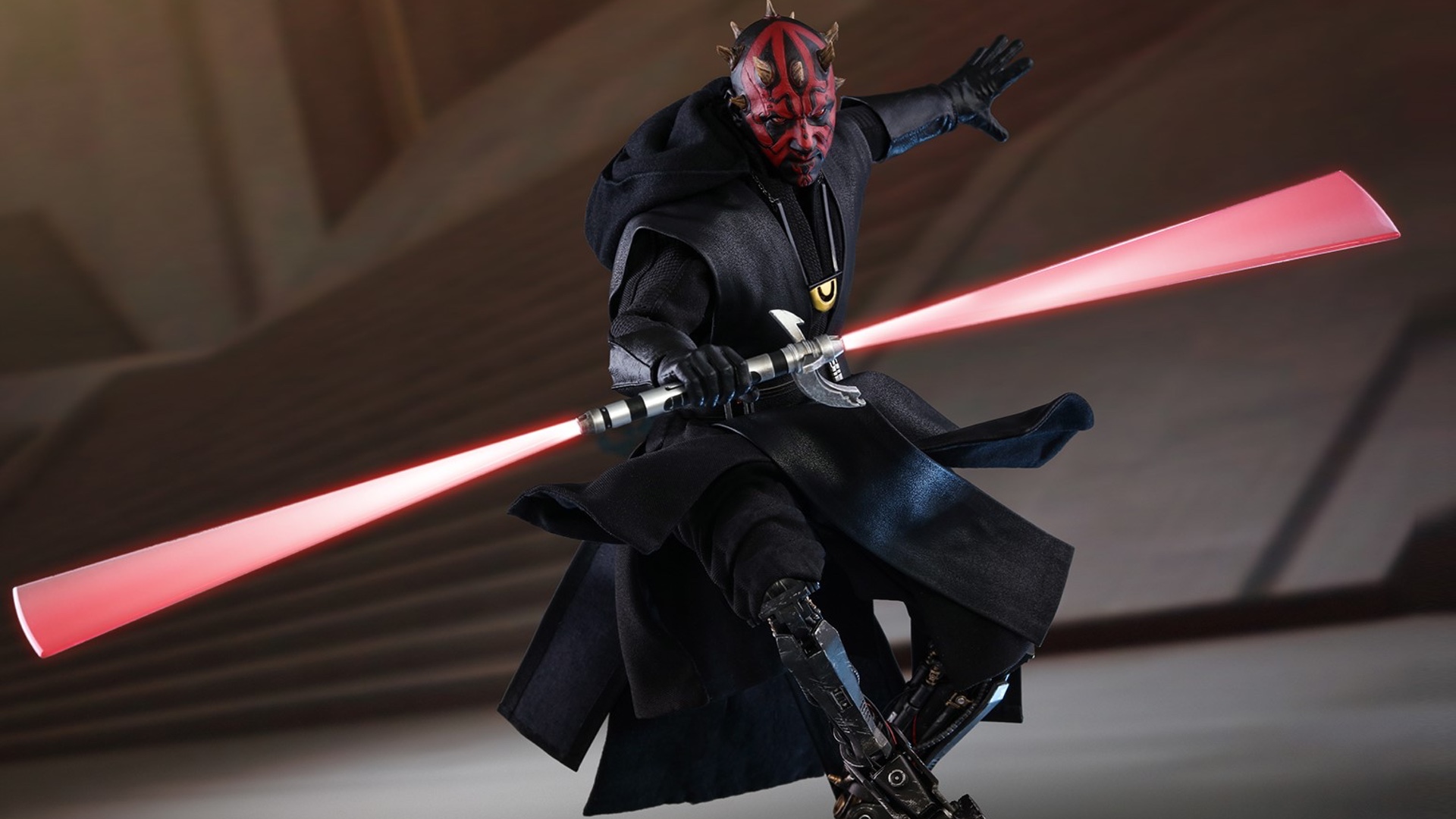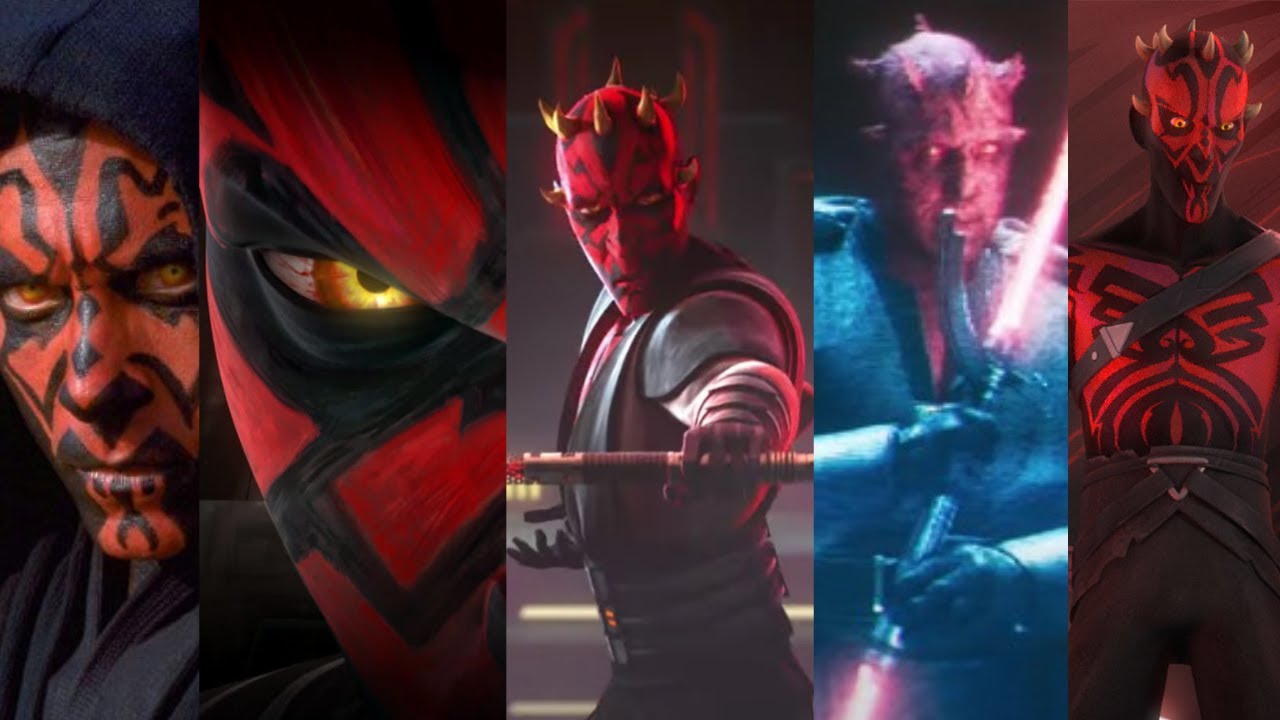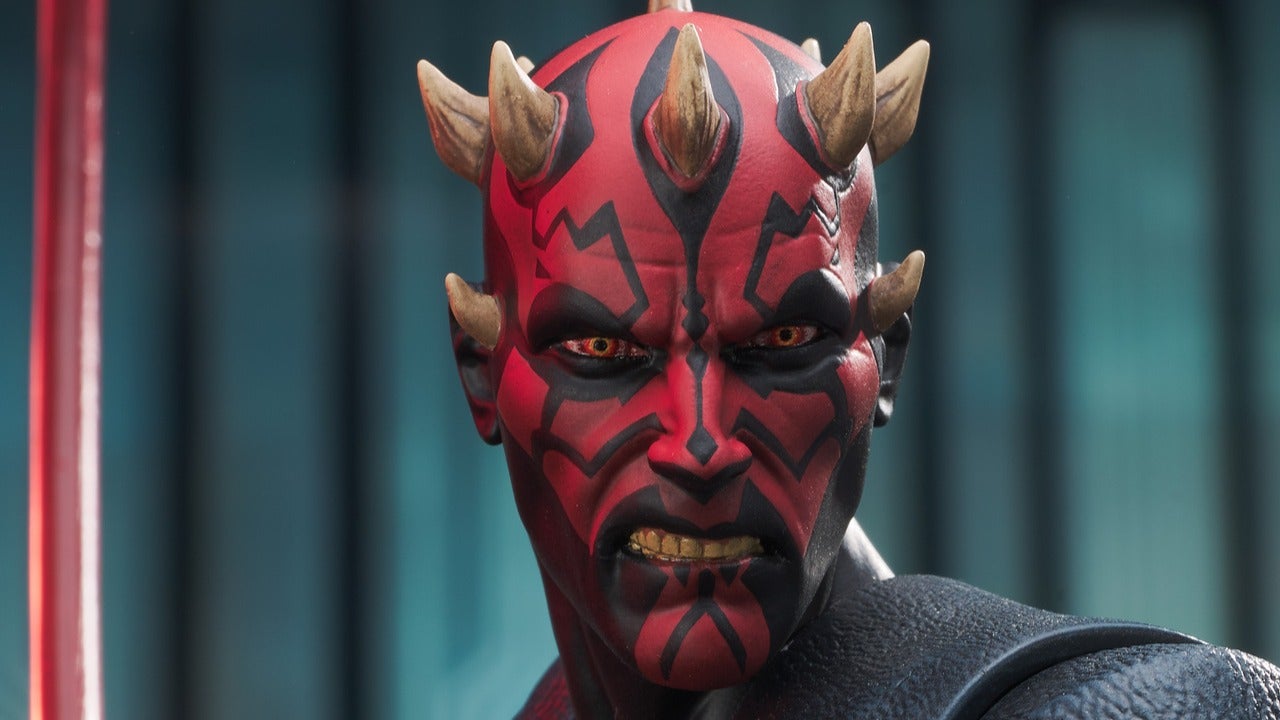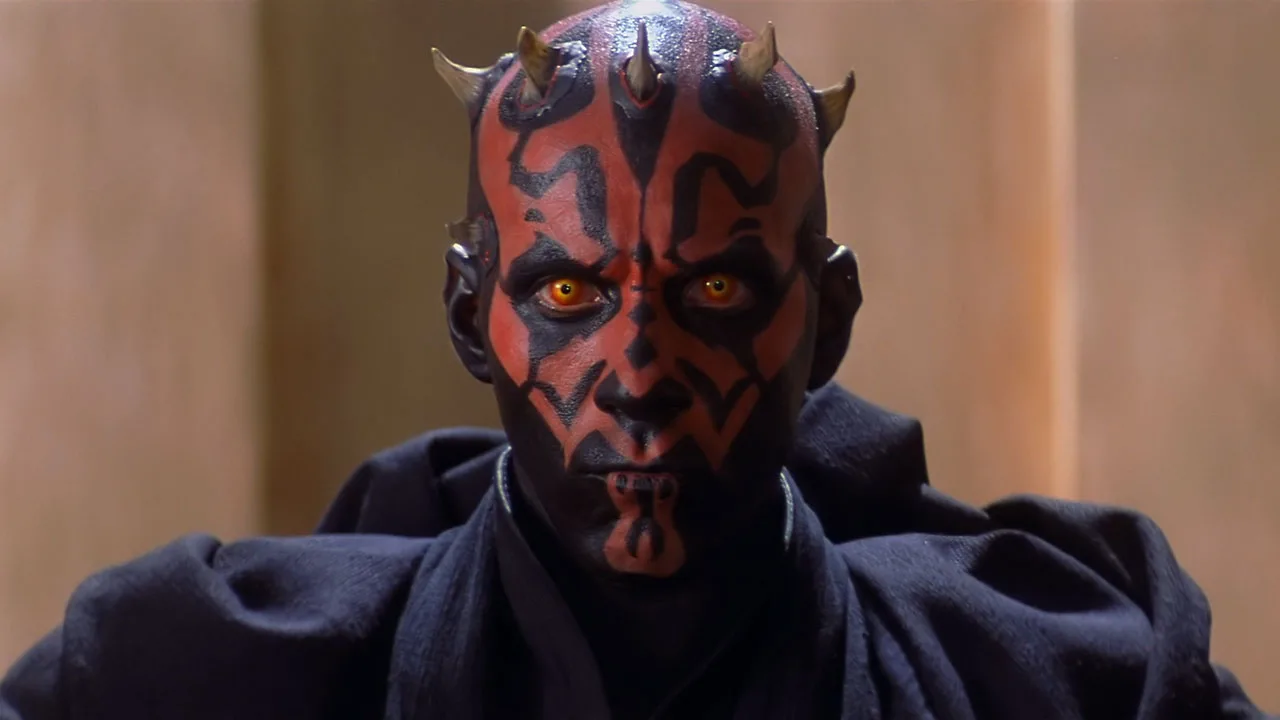No products in the cart.
News
Unveiling the Enigma: How Did Darth Maul Die? Exploring His Cinematic Odyssey in Star Wars
Whether you’re a dedicated Star Wars fan or just someone who enjoys a good movie, chances are you’ve come across the mysterious and intimidating figure known as Darth Maul. However, a common question that arises is, “In which movies does Darth Maul appear?” This article aims to unravel the cinematic journey of this iconic Sith Lord, exploring the films where his formidable presence is felt. Additionally, fans often wonder, “How did Darth Maul die?”—a query that adds another layer of intrigue to his character’s enigmatic story.
A Concise Introduction
How Did Darth Maul Die?
Star Wars: Episode I – The Phantom Menace (1999):
This is the movie that introduced Darth Maul to global audiences. Serving as the primary antagonist, he engages in thrilling lightsaber duels with his distinctive double-bladed weapon. His combat skills, acrobatic fighting style, and fierce determination make him a formidable adversary for Jedi Knights, especially Jedi Master Qui-Gon Jinn and his apprentice, Obi-Wan Kenobi.

Solo: A Star Wars Story (2018):
In the cinematic tapestry of “Solo: A Star Wars Story,” released in 2018, Darth Maul emerges as a captivating enigma in an unexpected and gripping manner. While he may not be the central focus of the narrative, his surprise cameo appearance at the film’s conclusion serves as a pivotal moment that resonates with Star Wars enthusiasts.
Darth Maul’s unanticipated return to the big screen after his initial appearance in “The Phantom Menace” adds a layer of complexity to his character’s overarching storyline. The cameo becomes a cinematic window into Maul’s post-“Phantom Menace” existence, allowing audiences a tantalizing glimpse into the events that unfolded in the Sith Lord’s life after his dramatic duel with Obi-Wan Kenobi on Naboo.

This brief but impactful cameo hints at a broader narrative canvas, one that extends beyond the confines of a single film. It showcases Darth Maul’s continued involvement in the intricate web of galactic politics, power dynamics, and conflict. The Sith Lord’s presence becomes a thread woven into the fabric of the Star Wars saga, connecting disparate elements and characters across different timelines.
As the camera unveils Maul in the shadows, viewers are confronted with the realization that his story is far from over. The enigmatic figure, marked by his crimson skin and intimidating presence, stands as a symbol of enduring malevolence within the Star Wars galaxy. The subtle yet profound implications of his cameo resonate with the overarching themes of the Star Wars narrative—the perpetual struggle between the light and dark sides of the Force, the cyclical nature of power dynamics, and the interconnectedness of characters across generations.
Moreover, Maul’s cameo in “Solo” serves as a testament to the meticulous planning and interconnected storytelling that defines the Star Wars franchise. It elevates the film beyond a standalone adventure, contributing to the larger narrative tapestry that binds the various trilogies and standalone films together. The unexpected reappearance of Darth Maul invites viewers to delve deeper into the complexities of his character, sparking curiosity about his role in the broader Star Wars chronicles.
Star Wars: The Clone Wars (2008) – Animated Film:
In the realm of “Star Wars: The Clone Wars,” the animated film released in 2008 stands as a pivotal entry, providing a unique and compelling perspective on the galactic conflict. Although not a live-action spectacle, this animated masterpiece occupies a crucial position within the Star Wars canon, offering fans a deeper understanding of the complexities that define the universe. At the heart of this animated saga is none other than Darth Maul, whose presence in the film transcends mere spectacle, becoming a beacon of resilience and tenacity.

Darth Maul’s role in “The Clone Wars” animated film is not just an embellishment to cater to fan nostalgia; rather, it serves as a narrative cornerstone, shedding light on the intricate facets of his character. The animated medium allows for a more immersive exploration of Maul’s psyche, motivations, and the evolution of his alliances and schemes. Through vibrant visuals and dynamic storytelling, the film becomes a canvas upon which Maul’s multifaceted persona is painted with intricate strokes.
As the narrative unfolds, viewers are taken on a journey that peels back the layers of Maul’s enigmatic existence. His resilience, evident in the face of daunting challenges, becomes a defining aspect of his character. The animated format enables the creators to showcase Maul’s physical prowess and combat skills in ways that live-action might struggle to capture. From lightsaber duels to strategic maneuvers, Maul’s presence injects a dynamic energy into the animated landscape, captivating audiences and underscoring his significance in the larger Star Wars narrative.
The film not only explores Maul’s individual journey but also provides a broader context for his actions within the intricate tapestry of the Clone Wars. It unveils the machinations of a character driven by a relentless pursuit of power and vengeance, adding layers of depth to the overarching storyline. Maul’s interactions with other key figures in the Star Wars universe further amplify the narrative complexity, creating a rich and interconnected story that resonates with both seasoned fans and newcomers alike.
Star Wars: The Clone Wars (2008-2020) – Animated Series:
Venturing beyond the confines of a standalone film, the animated series “Star Wars: The Clone Wars” becomes an expansive canvas upon which the saga of Darth Maul unfurls over the course of more than a decade. This enduring exploration, spanning from 2008 to 2020, transforms Maul from a mere antagonist into a central, dynamic force within the intricate web of the Star Wars universe.

Darth Maul’s reappearance in “The Clone Wars” animated series signifies more than a mere return; it marks the commencement of an epic odyssey that delves into the depths of his character. This animated format allows for a meticulous examination of Maul’s psyche, unveiling layers of complexity that extend far beyond his initial cinematic introduction. Viewers witness not only the continuation of Maul’s story but an evolution that showcases his strategic brilliance, unparalleled combat prowess, and an unyielding determination to reclaim the power he believes is rightfully his.
As the series progresses, Maul’s character is no longer confined to the shadows of the Sith; instead, he emerges as a central player, manipulating events to suit his grand designs. His interactions with other key figures, both familiar and new, contribute to the intricate tapestry of “The Clone Wars,” injecting a level of complexity that resonates with the mature themes of power, revenge, and the blurred lines between good and evil.
Maul’s presence in the animated series is a testament to the storytelling depth that the Star Wars franchise can achieve. The character undergoes significant development, transcending the boundaries of a traditional villain. His motivations become more nuanced, and his quest for power is revealed to be intricately linked to the larger machinations of the galaxy. This exploration not only enriches Maul’s character but also enhances the overall narrative of “The Clone Wars,” offering fans a deeper understanding of the forces at play during this tumultuous period in the Star Wars timeline.
Furthermore, the series showcases Maul’s enduring appeal. The character’s complexities and contradictions, his moments of vulnerability juxtaposed with displays of sheer strength, contribute to a multifaceted persona that captivates audiences. Maul’s journey becomes a symbol of the series’ ability to breathe life into characters, fostering a connection between viewers and the denizens of the Star Wars galaxy.
In conclusion, to the question, “What movie is Darth Maul in?” – Darth Maul made his cinematic debut in “Star Wars: Episode I – The Phantom Menace” and later appeared in “Solo: A Star Wars Story.” However, his story extends beyond the silver screen, with notable appearances in the animated film “Star Wars: The Clone Wars” and the accompanying animated series.
Darth Maul’s enduring presence in the Star Wars franchise underscores the character’s popularity and the continued fascination he generates among fans. Whether you’re a fan of the original trilogy or the expanded Star Wars universe, Darth Maul’s appearances in these films and series offer a rich and compelling narrative within the galaxy far, far away.


IDEAS & ADVICE
Is Thor Marvel Or DC? Unveiling The True Comic Book Universe Of The Mighty Thunder God
Explore the enigmatic origins of Thor, the Norse god of thunder, and uncover the truth [...]
Unveiling The Ultimate Showdown: Who Is Stronger Thor Or Captain Marvel?
Discover the ultimate power struggle in the Marvel Cinematic Universe with Thor and Captain Marvel. [...]
Is Wolverine An Anti Hero? Exploring The Complexities Of Marvel’s Iconic Character
Wolverine, also known as Logan, is one of the most complex and beloved characters in [...]
Does Wolverine Age? Unraveling The Mystery Of Wolverine’s Immortality
Wolverine, also known as Logan, is one of Marvel Comics’ most iconic characters, beloved for [...]
Is Hulk Hogan Married? Unveiling The Personal Life Of The Wrestling Icon
Looking for the latest updates on Hulk Hogan’s personal life? Wondering, “Is Hulk Hogan married?” [...]
Is Hulk Immortal? Exploring The Incredible Hulk’s Endurance And Longevity
The Hulk, one of Marvel’s most iconic characters, has long been a subject of fascination [...]
Who Plays Quicksilver In Avengers? Unraveling The Marvel Cinematic Universe’s Speedster
Quicksilver, the lightning-fast superhero from the Avengers, has been portrayed by various actors throughout the [...]
Silver Screen Speedster: What Movie Is Quicksilver In?
Quicksilver, the lightning-fast superhero from the Marvel universe, has made a significant impact not only [...]